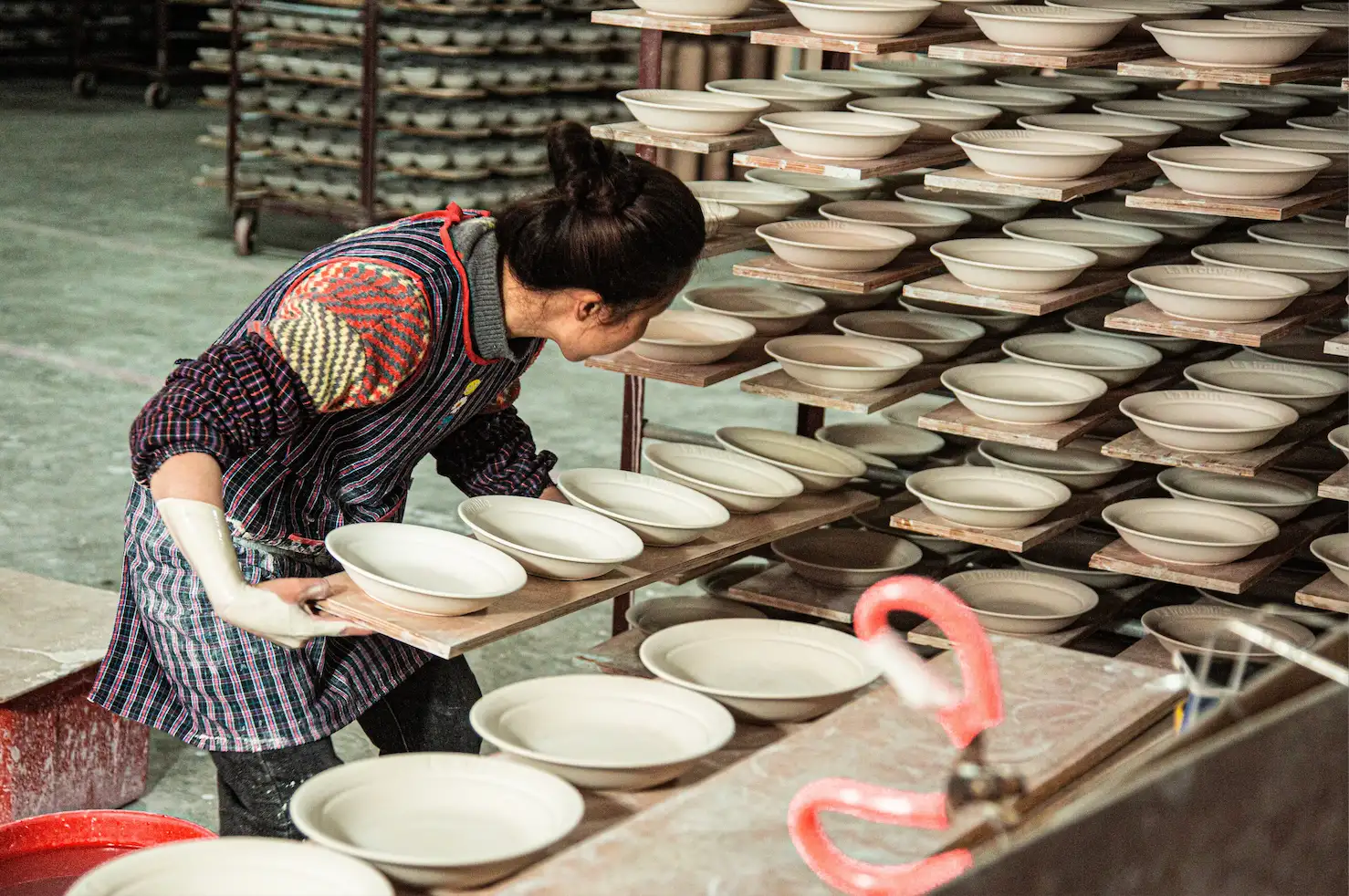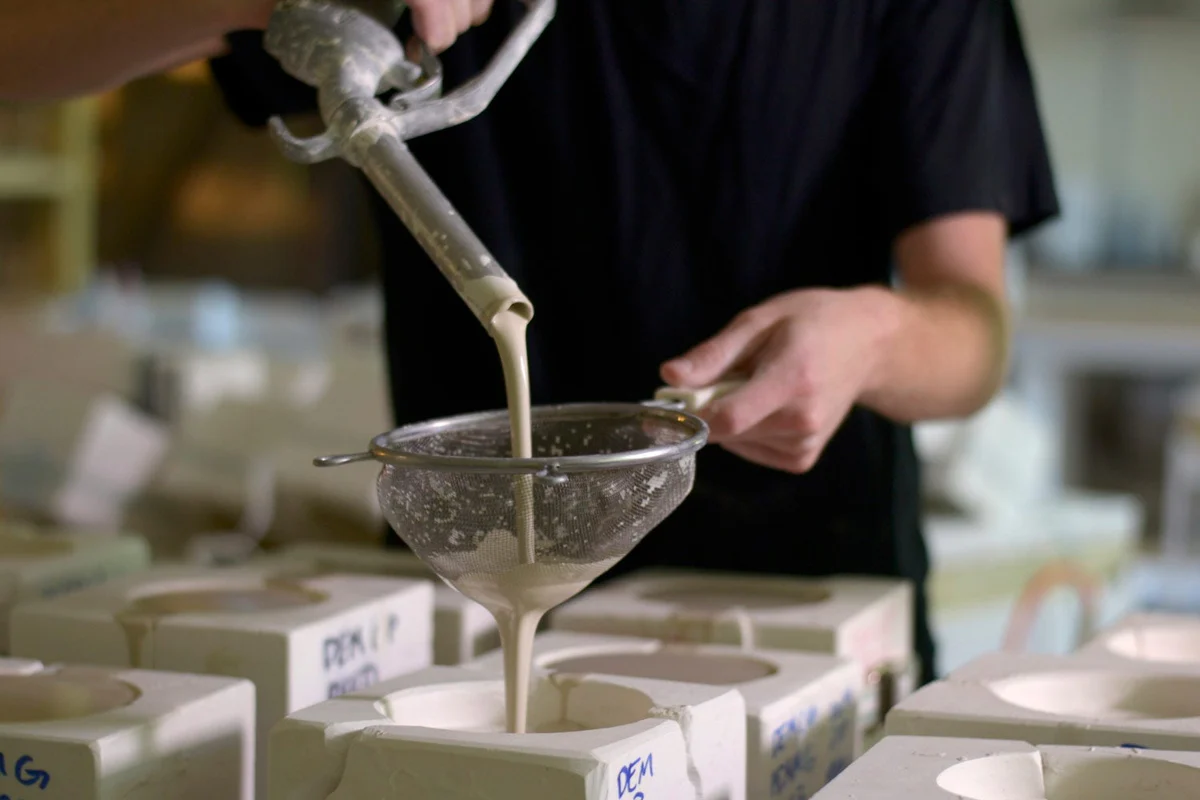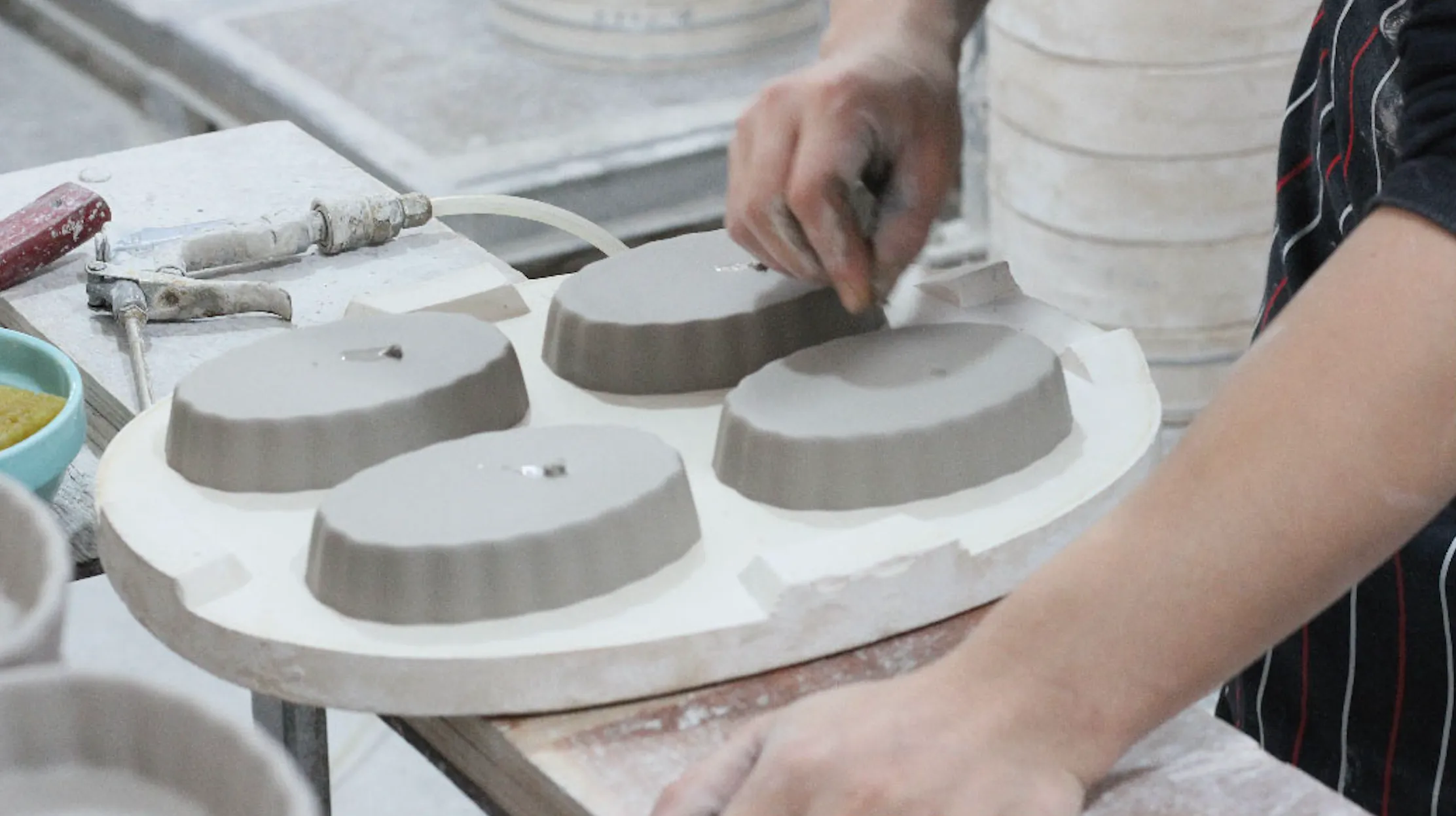Ceramic tableware is not only practical in daily life but also a kind of art. Its exquisiteness in appearance is closely related to rich cultural connotations. In the process of producing ceramics, ceramic greenware molding is an important link that cannot be ignored. Ceramic greenware molding process directly influences the shape and strength of the ceramic tableware and its subsequent processing.
What is Greenware in Ceramics?
In ceramics, greenware is a term used to describe objects of unfired clay shape that have not gone through the firing process in a kiln yet. This represents the most fragile stage in ceramics since the clay is soft and is easily damaged or altered. Wet, leather-hard, and bone-dry are three stages in greenware.
- Wet greenware has just been shaped and still retains considerable moisture, making it flexible for adjustments.
- Leather-hard greenware is partially dried, firmer, and ready for additional details such as carving or trimming.
- Bone-dry greenware is completely dried but ready to be bisque-fired; it’s also extremely brittle and delicate at this stage.
When greenware is fired, it becomes bisque: much stronger, and ready to be glazed and further decorated.

Major Ceramic Greenware Molding Processes of Tableware
The three major ceramic tableware molding processes, which include slip casting, pressure casting, jiggering and jollying, will be explained in depth in this blog.
Slip Casting
Slip casting is the most traditional and common molding process for all ceramic production, and it is suitable for manufacturing complex-shaped ceramic tableware such as pattern plates, carved cups, etc.

Principle of process: The prepared liquid mud is injected into the gypsum mold, and the moisture in the mud will be absorbed by the gypsum mold. Thus a certain thickness of the mud blank will be formed on the inner wall of the mold. After the mud blank reaches a certain hardness, take out the blank for subsequent processing.
Advantage:The advantages are that the slip casting process may make very complex shapes, rich in detail, and are also very flexible in mold design. Tableware of various shapes can be manufactured according to needs. It is suitable for small-batch production and making uniquely designed tableware.
Applicable products: Slip casting is mainly adopted in the production of artistic ceramic tableware with complicated shapes, such as a plate, a bowl, a teapot, and a cup and saucer with delicate carvings and textures.
Pressure Casting
Pressure casting is a relatively modern ceramic tableware molding process, which makes use of high-pressure equipment to press the clay into shape through a mold. Compared with the slip injection process, high-pressure casting has obvious advantages in efficiency and product consistency.
Principle of the process: The ready ceramic clay is placed in a special metal mold, and then, with the use of high-pressure mechanical equipment, it is pressed into shape. The high pressure makes the clay solidify in a very short period to form a high-density ceramic body.
Advantages:The advantages are that the high-pressure casting process has high efficiency and high uniformity, with a huge amount of ceramic bodies produced in a very short period, suitable for large-scale industrial production. Meanwhile, as a result of the high density during pressing in the molding process, this kind of process will lead to a stronger and denser body with better durability when it is finished with firing.
Applicable products: Generally adopt high-pressure casting to produce large quantities of tableware with regular shapes, like plates, saucers, cups, bowls, etc.
Jiggering and Jollying
The jiggering and jollying method is one of the most advanced molding processes in recent years, which was especially suitable for the manufacture of ceramic tableware with larger surfaces like dinner plates and trays. In this process, mechanized equipment is used to roll the clay in the mold, which has characteristics of high automation.

Principle of process: Clay enters the mold through the pressure roller under the action of a rolling machine. The clay is rolled and compacted, and the shape is preliminarily formed into a predetermined shape. The key to the rolling process is adjusting the pressure-rolling machines that can accurately control the thickness and shape of the blank to make sure that the sizes of every piece of tableware are identical.
Advantages: The advantages are that the jiggering and jollying has a high production efficiency and precise blank size, suitable for mass production of large-plane and simple-shaped ceramic tableware. Meanwhile, with the help of a rolling process, the thickness and density of the blank can be controlled so that the finished product will not break easily and look more attractive.
Applicable products: The jiggering and jollying process can be used to manufacture large-sized tableware in flat plate and tray shapes, as well as some types of large bowls.
comparison of Three different molding processes
Complexity: The slip casting process is suitable for producing complicated-shaped tableware that has many rich details. Their product family is more similar to each other while under the high-pressure casting, jiggering and jollying are more suitable for products in a relatively simple and regular shape.
Production efficiency: The production efficiency of high-pressure casting and Jiggering and Jollying processes is very high. It is suitable for massive industrial production. However, the grouting process takes longer because it depends on mold water absorption and solidification, only suitable for small-batch production or high-end customization.
Product features: The products made by the high-pressure casting process are of high intensity and high density, while the jiggering and jollying is suitable for manufacturing products with large surfaces and good flatness. The slip casting is suitable for products whose appearances are complex, and fully detailed.


Conclusion
This is an important factor in determining the product quality and appearance of the tableware ceramic greenware molding process. To introduce three processes: slip casting, high-pressure casting, and jiggering and jollying. Each process has different advantages and different suitable needs. No matter how intricate tableware craftsmanship or mass-produced daily tableware is all can use the corresponding technology and experience in ceramic manufacturing to provide high-quality tableware products.
Chaozhou Ceramic Manufacturers Association of Ceramic Manufacturers produces various types of ceramic tableware for different scenes, including household daily tableware, hotel, and restaurant tableware. The design of various products is rich and diversified, from simple and modern to traditional classic style. No matter whether you want a high-quality plate, bowl, or cup, or a customized solution of ceramic tableware, ceramic manufacturers can provide high-quality products to meet different needs.










